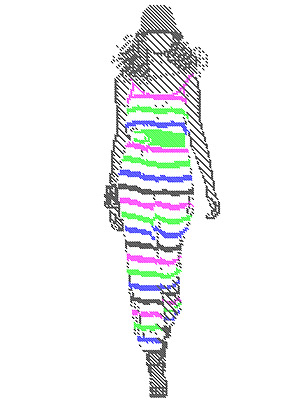
For Net-a-Porter, a London-based e-tailer of luxury-brand women’s wear, the Great Recession wasn’t even a speed bump. “We actually outperformed our own business plan. Sales were exceptional,” says Natalie Massenet, the company’s American founder and executive chairman. Its sales soared 53% in 2008. That recession-be-damned kind of growth prompted Swiss luxury-goods conglomerate Richemont, which already owned a third of the company, to buy the rest in a deal last April that valued it at $568 million at the time. In February, Net-a-Porter stretched its model to menswear, launching Mr Porter, a separate site for guys. Richemont reported that Net-a-Porter’s sales increased 108%, to about $400 million, in the fiscal year ending in March. It’s been profitable since 2003, three years after its launch amid the dotcom crash. Moreover, the number of visitors rose 32% last year, reaching 3 million a month, while the site added 11,000 paying customers a month. Key to its success is the premium it places on service — it offers, for example, same-day deliveries in London and Manhattan. Superior service always appeals to well-heeled shoppers. “But during a recession, it matters more than ever,” Massenet says.
Net-a-Porter’s nonstop growth has helped spark a big push for online sales by the world’s luxury brands — a move many of them long resisted. The presumption was that buyers of pricey goods demanded person-to-person selling. “Net-a-Porter made them sit up and take notice,” says Guy Salter, deputy chairman of Walpole, a trade group for posh British goods and services. Sales of luxury goods fell sharply during the downturn, but brands that were selling on the Web saw digital sales hold up — perhaps in part because customers could buy luxury goods sheltered from public view. Given that performance, nearly all luxury companies, including Burberry and Herms, have recently gone digital or boosted their webtailing efforts. Then there’s Faberg. It was relaunched in September 2009, mainly as an online site. The rush to the Web coincides with a postdownturn rebound for luxury-goods sales. Banking group HSBC estimates that the appetite for high-end products will grow 11% this year. But that’s mainly thanks to increasing demand in Asia, not Web sales. Online sales, though growing, remain a relatively small piece of the pie for most brands. But Milton Pedraza, CEO of New York City’s Luxury Institute, predicts that digital sales will account for 15% to 20% of revenue for most brands within a few years. And buyers are also showing a willingness to make big purchases online. Tiffany & Co., for instance, has sold diamond pieces worth $250,000 on its site.
Why did so many luxury-goods companies spend years eschewing the Web? “They thought it would cheapen the product because they couldn’t replicate the in-store experience online,” Pedraza explains. But for wealthy customers, clickable convenience combined with great service is an enticing mix. “Luxury brands now understand that their customers want what they want, when they want it,” he says. Adds Massenet: “It’s a false assumption that people with a lot of money have a lot of free time to shop.”Luxury brands also associated e-commerce with discounting, which they loathe. But Net-a-Porter sells only full-priced merchandise, proving that needn’t be the case . Just because discounters and top brands share Internet space “doesn’t mean they’re homogeneous,” Massenet says, pointing out that Neiman Marcus happily coexists with the likes of Target and JCPenney.
That an increasing number of luxury brands are heading online doesn’t mean greater competition, she insists. While Net-a-Porter sells goods from about 350 designers, it offers only a limited selection from each. The more that top brands embrace e-commerce, she says, the more it builds demand. “It’s a case of driving more customers online.” To be sure, some of swankdom’s most famous names remain on the sidelines. You can’t, for instance, buy Chanel clothes or accessories online, and the same goes for Rolex and Vacheron Constantin watches and Montblanc pens. But Massenet believes the digital divide among luxury brands will soon disappear. “It’s inevitable,” she says. “They will all be online because their customers are asking for it.” And as someone who does most of her shopping on the Web, Massenet says she hopes Chanel will take the plunge soon. See the “Style & Design Global Luxury Survey.”
See who is the speediest and slowest among e-retailers.